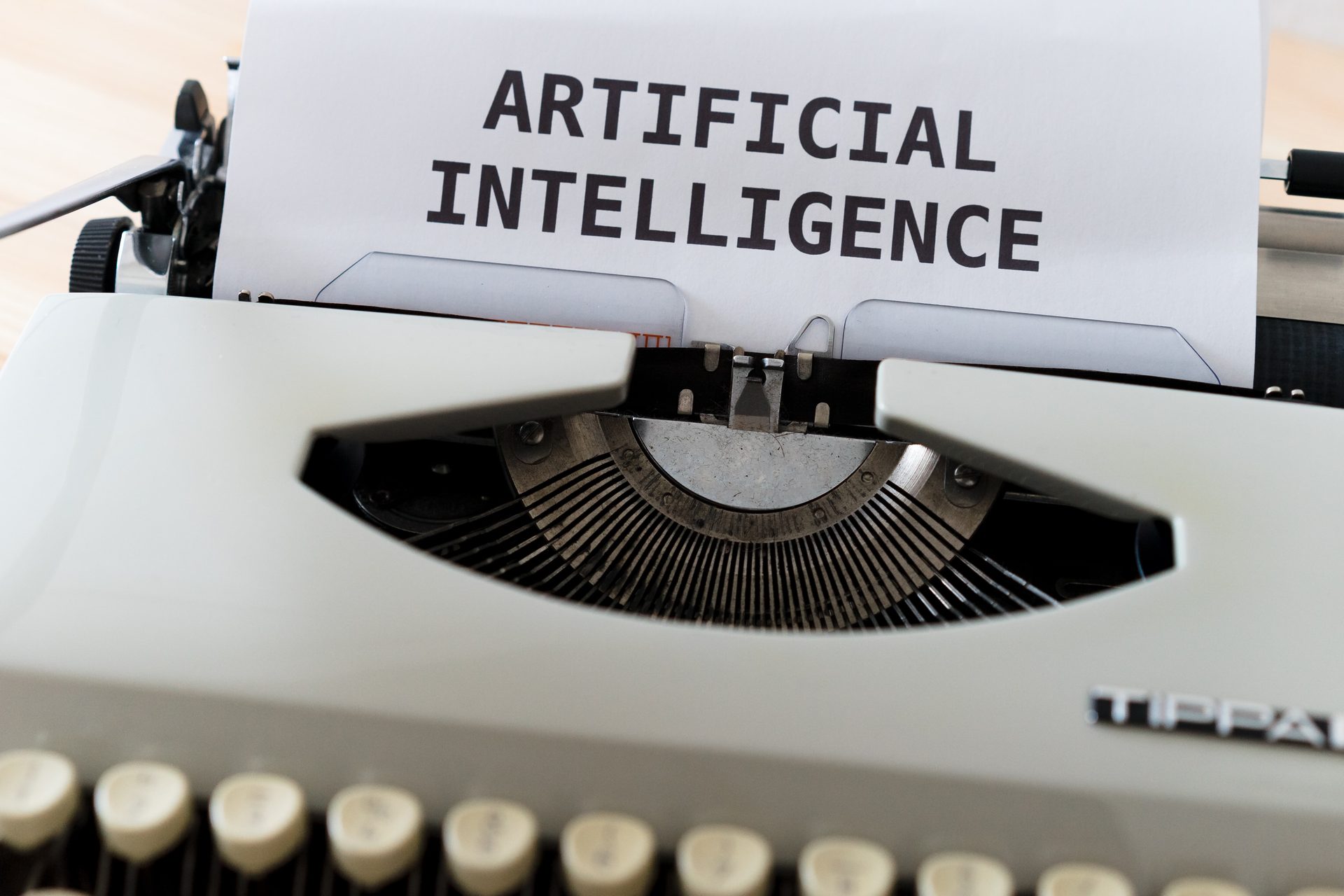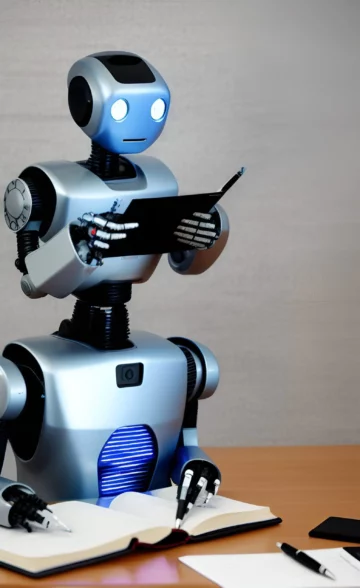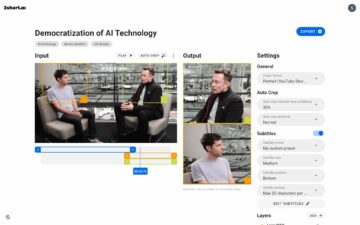AI adoption has become a main focus in the technology business and will not lose this position for a while according to recent artificial intelligence researches and reports. Although there are currently many people enjoying the benefits of being an early adopters of AI, this won’t last forever. Now more than ever, people are curious about AI adoption, even though many people don’t even fully understand the impact of AI in daily life. It’s a challenging question, but we’ll do our best to address it today.
Don’t be scared of AI jargon; we have created a detailed AI glossary for the most commonly used artificial intelligence terms and explain the basics of artificial intelligence as well as the risks and benefits of artificial intelligence. But security always comes first, right?
What is AI adoption?
Artificial intelligence (AI) is tailor-made software that tries to imitate the problem-solving and goal-attainment capabilities of the human brain and AI adoption means integrating these technologies into business systems. Even though AI is still a young technology, its use is increasing worldwide as businesses seek to improve productivity and efficiency. The telecommunications, high technology, and banking sectors are among the most active adopters of AI.

Artificial intelligence (AI) can replace humans in high-volume, frequent, computerized jobs without tiring. Most commonly, AI is used to enhance and expand upon an already existing product by adding machine intelligence. Virtual assistants, chatbots, and other forms of automated customer care are some of the most prevalent AI investments made by businesses and organizations. The mining of social data, the automation of human resources, the improvement of products and services, and the translation of languages are also frequently cited as motivations for the use of AI (i.e., Google Translate).
The field of artificial intelligence (AI) has come a long way since its creation in the 1950s, with numerous new programs being introduced in recent decades. The most widely used type of learning nowadays is machine learning (ML). In order to learn from experience and generate predictions, computers employ enormous datasets and algorithmic processing. Together, ML and NLP translate human speech into computer code for use in chatbots and other forms of virtual communication.
“We are headed toward a situation where AI is vastly smarter than humans. I think that time frame is less than five years from now. But that doesn’t mean that everything goes to hell in five years. It just means that things get unstable or weird.”
Elon Musk
See how AI is being used now by businesses:
| AI Usage | Percentage |
| Don’t use AI currently but are looking into it | 7% |
| Have tested a few proofs of concepts with limited success | 14% |
| We have a few promising proofs of concepts and are looking to scale | 21% |
| We have processes that are fully enabled by AI with widespread adoption | 25% |
| We have started implementing with limited AI use cases. | 33% |
AI adoption is on the rise, but it still faces some significant obstacles. Because AI relies on a big amount of data, not all sectors and companies have accumulated enough of it. Since AI is still a relatively new industry, qualified candidates can be difficult to come by for most companies. A second issue that worries businesses is the potential for data leaks and security lapses when using AI.
So first, let’s look at the AI adoption challenges to waiting for newcomers.
AI adoption challenges
It is estimated that AI would add $15.7 trillion to the global economy by 2030. By then, seventy percent of businesses will have implemented some form of artificial intelligence. Nonetheless, there are still obstacles to AI adoption across industries, and we have less than a decade to go until we hit these standards. The difficulties associated with using AI are not limited to any one sector or area of business. All businesses, no matter how large or little, new or old, technologically advanced or lagging, are certain to face at least one of these challenges.
Company culture
The belief that AI isn’t required or helpful is the most significant and perhaps catastrophic obstacle to its widespread use. Because of this, many businesses develop an attitude that AI is unnecessary, possibly due to concerns about job security or loss of authority. Organizations can get an edge over rivals by strategically implementing AI. Without it, businesses may fall behind in the market to rivals that have adopted AI-backed insights and efficiencies.

There is a lot of work involved in deploying and guiding AI initiatives, even in a culture that is fully supportive of such endeavors. Even in perfect circumstances of AI adoption, there will be obstacles, so the corporate culture must provide the person or people in charge with the authority they need to overcome them.
Data requirements
Artificial intelligence acquires knowledge through the analysis of past data. The capabilities of the final AI engine are inextricably linked to the quality of the training dataset. It’s crucial to have access to accurate, well-organized information with no bias.
The difficulty of this task belies its apparent simplicity. Your company may have access to relevant data, but that data may not be well-organized or devoid of errors. Incorrect or biased datasets will produce AI with the same tendencies. In addition to introducing the very errors that AI is meant to prevent, this raises ethical difficulties.
Costs
Costs can quickly add up when putting into action AI, especially when developing a one-of-a-kind answer. All resources are included, not just cash. Data scientists, software engineers, and developers skilled in artificial intelligence are in limited supply. Because of this shortfall, more time and money will be needed to put into execution.

Lack of strategy
Adopting AI is a vague concept that can have varied connotations for various businesses. It’s possible that a chatbot may be used by a local business online. Many robotic arms could be added to a factory by a major company. Without a plan, it’s hard to reap the benefits of these enhancements no matter how big your rollout is.
Investing strategically in AI may take more time and money, but it will be worth it in the end. There are fewer obstacles to implementing AI if use cases, potential process modifications, competitive benefits, and chances to scale across business units are all identified from the start.
Regulations
Limitative AI restrictions may apply to your company depending on its location and the nature of the goods and services it offers.
Knowing that AI is typically a “black box” that can inherit biases from data is important even if you aren’t subject to any specific regulations regarding its use. As a result, stakeholders may have trouble understanding and accepting AI’s conclusions.
Security weaknesses
There will always be a chance of cyberattacks because of technological advancements. This also applies to AI. To ensure the safety of your business, employees, and customers, the deployment team must think about how to safeguard the AI’s training data, insights, and judgments.

So, are the benefits worth dealing with them?
AI adoption benefits
What are the reasons for adopting AI? Again, it is tailor-made software. Thus, the “reasons” can vary depending on the specific business that wants to implement AI. However, we can summarize the many reasons why AI adoption should be pursued and their advantages under a few categories.
Machine Learning (ML)
The use of microblogging sites, online banking, and online shopping are just a few examples of when machine learning technology is put to use. Machine learning is a technique for developing an intelligent system that can optimize its own output based on the information it takes in.
Customer Relationship Management (CRM)
The combination of customer contact management with AI capabilities can help your staff to be more efficient and productive. It can help them with things like scheduling and keeping track of appointments, making phone calls, organizing meetings, taking notes, and any other manual work they may need assistance with.
Cybersecurity
The volume and sophistication of cyberattacks are both on the rise, but this is not always leading to a reduction in cybercrime. A cyberattack in which hackers extract a large amount of data from an app or website might be triggered by even a single software fault. If more organizations adopt AI tools, cyber defenses will be more effective and cyber attacks will be less common.
Smart pricing
Estimating the value of a service (or product) is one of the most difficult tasks for any business. To arrive at appropriate pricing for a service, it is necessary to investigate various factors, such as customer feedback, manufacturing costs, consumer activity, competition prices, etc.
The ideal pricing strategy can be developed with the help of AI and ML techniques and a large amount of data.
Automated recruitment
The recruitment team’s primary responsibility is to identify and choose the most qualified applicants. It is a common problem for businesses to hire the best person for the position.

Using AI, the hiring process can be simplified for more people. Artificial intelligence (AI) can find the best candidates, track them down, and set up interviews in accordance with protocol. In addition, it may estimate how long an employee will remain with the organization. As a result, AI can help businesses save time and money throughout the hiring process.
Check out how is artificial intelligence changing the recruiting process.
Let’s see if these benefits are also supported by statistics.
Artificial intelligence stats to check in 2023
One of the most rapidly expanding and widely adopted data-driven technologies is artificial intelligence (AI). Multiple institutions all across the world are making use of AI, from governments and major enterprises to small internet firms.
Why the number of AI adopters is increasing day by day? Keep reading…
- You are not alone! Four out of five businesses place a high value on artificial intelligence, according to Forbes.
Eighty-three percent of businesses say that incorporating AI into their operations is a high strategic objective.
Among the most common applications of AI in routine corporate communication are automated email and chatbots.
- With a compound annual growth rate of about 40%, the global AI market is expanding rapidly, according to Grand View Research.
The recent explosive expansion of AI is unlikely to level out anytime soon.
In fact, between 2022 and 2030, global enterprise adoption of AI is projected to grow at a compound annual growth rate of 38.1%.
- There will be a $180 billion opportunity in the wearable AI business by 2025, according to Global Market Insights.
The rising popularity of devices like the Apple Watch and Fitbit is expected to increase the size of the wearable AI market worldwide.

A market valuation of $180 billion by 2025 is projected.
- More than $80 billion will be made in the next five years from the sale of AI chips around the world, according to Insight Partners.
By 2027, the global market for AI chips is expected to generate $83.25 billion in revenue.
- There will be about 100 million people employed in the artificial intelligence sector by 2025, according to We Forum.
There will be a need for more people in the AI industry as forecasts continue to rise.
There will be a shortage of almost 97 million workers to meet the needs of the booming economy by the year 2025.
- Eighty percent of retail CEOs believe that AI automation would be implemented in their companies by 2025, according to Analytics Insight.
Almost all retail CEOs surveyed anticipate implementing AI technology over the next three years.
- AI is predicted to increase productivity by 40 percent in the workplace, according to PWC.
It has been estimated that by 2035, AI will increase worker productivity by roughly 40%.
- Almost half of all companies currently utilize artificial intelligence, machine learning, or data analysis, according to O’REILLY.
Nearly half (48%) of firms employ ML, data analysis, and AI solutions to ensure the integrity of their data.

Do you want to learn more about artificial intelligence stats, trends, and news? Stay tuned and follow us on Twitter. We regularly share the latest developments in AI with expert opinions.
Are you wondering how your room will be in cyberpunk style? Try Interior AI
AI tools we have reviewed
We have already explained some of the best AI tools like Meta’s Galactica AI, Notion AI, Chai, NovelAI, ChatGPT, Caktus AI, Uberduck AI, MOVIO AI, Make-A-Video, and AI Dungeon. Do you know there are also AI art robots? Check the Ai-Da.
Are you into AI image generation? You can try these tools:
- SEO Powered Content & PR Distribution. Get Amplified Today.
- Platoblockchain. Web3 Metaverse Intelligence. Knowledge Amplified. Access Here.
- Source: https://dataconomy.com/2023/01/ai-adoption-artificial-intelligence-stats/
- 1
- 100
- 2021
- 2022
- 7
- a
- ability
- About
- access
- According
- Accumulated
- accurate
- Acquires
- across
- Action
- active
- activity
- adapt
- added
- addition
- address
- adopt
- adopted
- adopters
- Adopting
- Adoption
- advanced
- advancements
- advantages
- AI
- AI adoption
- ai art
- AI engine
- ai investments
- ai use cases
- algorithmic
- All
- already
- Although
- always
- among
- amount
- analysis
- and
- annual
- answer
- anticipate
- app
- apparent
- Apple
- Apple Watch
- applications
- Apply
- appointments
- appropriate
- AREA
- around
- Art
- artificial
- artificial intelligence
- Artificial intelligence (AI)
- Assistance
- associated
- Attacks
- authority
- Automated
- Automation
- Banking
- based
- because
- become
- behind
- being
- belief
- believe
- benefits
- BEST
- Better
- between
- bias
- Big
- Billion
- bird
- Brain
- business
- businesses
- Calls
- Can Get
- candidates
- capabilities
- care
- cases
- Cash
- catastrophic
- categories
- CEOs
- certain
- challenges
- challenging
- Chance
- chances
- changing
- charge
- chatbot
- chatbots
- check
- Chips
- Choose
- circumstances
- class
- code
- combination
- come
- Common
- commonly
- Communication
- Companies
- company
- competition
- competitive
- Compound
- computer
- computer science
- computers
- concept
- concepts
- Concerns
- consumer
- contact
- continue
- Corporate
- Cost
- Costs
- could
- created
- creation
- CRM
- crucial
- Culture
- curious
- Currently
- customer
- Customers
- cyber
- Cyber Attacks
- Cyberattack
- cyberattacks
- cybercrime
- cyberpunk
- Cybersecurity
- daily
- data
- data analysis
- data-driven
- datasets
- day
- dealing
- decade
- decades
- Depending
- deploying
- deployment
- detailed
- develop
- developed
- developers
- developing
- Development
- developments
- Devices
- difficult
- difficulties
- Difficulty
- Doesn’t
- Dont
- down
- Early
- early adopters
- economy
- Edge
- Effective
- effectiveness
- efficiencies
- efficiency
- efficient
- Employee
- employees
- endeavors
- Engine
- Engineering
- Engineers
- enormous
- enough
- ensure
- Enterprise
- enterprise adoption
- enterprises
- Errors
- especially
- estimate
- estimated
- etc
- Ether (ETH)
- ethical
- Even
- EVER
- everything
- examples
- execution
- existing
- Expand
- expanding
- expansion
- expected
- experience
- expert
- Explain
- explained
- extract
- Face
- faces
- factors
- factory
- Fall
- feedback
- few
- field
- final
- Find
- firms
- First
- Focus
- focuses
- follow
- Forbes
- forever
- form
- forms
- Forum
- FRAME
- frequent
- frequently
- from
- fully
- generate
- generation
- get
- Global
- Global economy
- global market
- Go
- Goes
- goods
- google translate
- Governments
- Grow
- Growth
- hackers
- Half
- Hard
- headed
- help
- helpful
- High
- hire
- Hiring
- Hit
- How
- How To
- However
- HTML
- HTTPS
- human
- Human Resources
- Humans
- ideal
- identified
- identify
- image
- image generation
- Impact
- implement
- implemented
- implementing
- important
- improve
- improvement
- in
- included
- incorporating
- Increase
- increasing
- increasingly
- industries
- industry
- information
- initiatives
- insight
- insights
- institutions
- Integrating
- integrity
- Intelligence
- Intelligent
- Internet
- Interviews
- introduced
- introducing
- investigate
- Investments
- involved
- issue
- IT
- jargon
- Job
- Jobs
- judgments
- Keep
- keeping
- Know
- knowledge
- lagging
- Languages
- large
- Last
- latest
- leading
- Leaks
- LEARN
- learning
- Level
- Life
- Limited
- linked
- little
- local
- Local business
- location
- Long
- Look
- looking
- lose
- loss
- Lot
- machine
- machine learning
- made
- Main
- major
- Making
- management
- manual
- manual work
- manufacturing
- many
- many people
- Market
- Matter
- means
- Meet
- meetings
- might
- million
- Mining
- ML
- Modifications
- money
- more
- more efficient
- most
- motivations
- multiple
- Nature
- necessary
- Need
- needed
- needs
- New
- news
- next
- nlp
- Notes
- number
- numerous
- objective
- obstacle
- obstacles
- Offers
- Old
- ONE
- One-of-a-Kind
- online
- online banking
- online shopping
- Operations
- Opinions
- Opportunity
- Optimize
- order
- organization
- organizations
- organizing
- Other
- Overcome
- own
- partners
- past
- People
- percent
- perfect
- perhaps
- person
- phone
- phone calls
- Place
- plan
- plato
- Plato Data Intelligence
- PlatoData
- popularity
- position
- possible
- potential
- predicted
- Predictions
- prevalent
- prevent
- Prices
- pricing
- primary
- Problem
- problem-solving
- process
- processes
- processing
- produce
- Product
- productivity
- Products
- Products and Services
- Programs
- projected
- promising
- proofs
- protocol
- provide
- put
- Putting
- PWC
- qualified
- quality
- question
- quickly
- raises
- rapidly
- Rate
- reasons
- recent
- recruiting
- recruitment
- regarding
- regularly
- regulations
- relationship
- relatively
- relevant
- remain
- replace
- Reports
- required
- research
- researches
- Resources
- responsibility
- restrictions
- result
- resume
- retail
- revenue
- Rise
- rising
- rivals
- robots
- Room
- roughly
- Safety
- sale
- same
- Save
- Scale
- scared
- Science
- scientists
- screening
- Second
- sector
- Sectors
- security
- Seek
- service
- Services
- set
- Share
- Shopping
- shortage
- shortfall
- should
- significant
- simplicity
- simplified
- since
- single
- Sites
- situation
- Size
- skilled
- small
- smarter
- So
- Social
- Software
- Solutions
- some
- Soon
- specific
- speech
- Staff
- stakeholders
- standards
- start
- started
- statistics
- stats
- stay
- Still
- Strategic
- Strategy
- style
- subject
- such
- summarize
- supply
- Supported
- supportive
- surveyed
- system
- Systems
- Take
- takes
- taking
- Task
- tasks
- team
- techniques
- technological
- Technologies
- Technology
- telecommunications
- The
- the information
- the world
- their
- things
- three
- Through
- throughout
- time
- to
- today
- together
- tools
- toward
- track
- Training
- translate
- Translation
- Trends
- triggered
- Trillion
- trouble
- typically
- under
- understand
- understanding
- units
- us
- use
- utilize
- Valuation
- value
- various
- View
- Virtual
- volume
- Waiting
- Watch
- watches
- wearable
- Website
- What
- What is
- which
- while
- widely
- widespread
- will
- without
- wondering
- Work
- worker
- workers
- Workplace
- world
- worldwide
- worth
- would
- year
- years
- young
- Your
- zephyrnet












